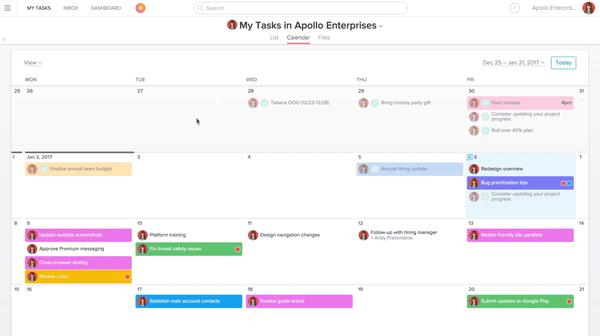For a while, the PR field felt as if it was limited to mega corporations that were able to splash out the big bucks, getting endless coverage for anything and everything that they did.
Times have changed.
Public relations (PR) is now open to any and all, so long as you have a good story to tell. The routes of entry are no longer fancy lunches or expensive gifts. Now, it’s all about who can use technology, data, and their expertise to share their story.
PR hacks bootstrapped businesses need to know
To mitigate wasted time on fruitless PR pursuits, I’ve put together four PR hacks that require nothing more than time and your industry knowledge to start on PR efforts.
1. HARO
Help a Reporter Out was once a hidden gem for marketers and PR professionals alike. Now, it's grown to become an essential tool for many professionals and businesses out there.
Why? It's simple to use and can provide a lot of PR opportunities.
For the benefits of a bootstrapped business, I'll talk about the free version of HARO. It's simple to use and takes little time out of your day to check daily updates.
You sign up and select the relevant categories that you feel are suitable for you and your business. Once selected, you confirm everything. From then on, you receive daily requests in your inbox.
The emails provide you with contact information, publishing name, and journalists. Extra information is also included with all the requests to help explain the story or question further.
Find a suitable and relevant request that you can comment on and reach out. Keep outreach simple. Answer the request as best as you can and provide background information about why you are an expert. Keep it to two-to-three paragraphs for the entire pitch, sticking to the core details. If more information is required, the requester will reach out.
That's HARO for PR in a nutshell. It's free and takes minimal time out of your day. Still not sure if HARO is for you? Read reviews about this innovative PR platform to see if it's right for you.

If you get mentioned or coverage, use it to find relevant journalists and share it with them. They may pick the story up, and you'll be the first person asked for comment.
2. #JournoRequest
With fast news and short-lived interests, journalists are more in need of opinions and quotes than ever. This has created a real opportunity for the Twitter world to take the lead. #JournoRequest allows for fluid communications between reporters and interviewees ensuring news goes out fast.
Once you've had a moment to check that link, you will see the opportunities that are waiting. Yet, you need to think about how your outreach will work, what you plan to do with these requests, and the steps you need to take.
You can also find Twitter profiles dedicated to these requests, as well as the hashtag #PRRequests.
Say that you've come across a fantastic request, are an industry leader, and can provide key insights. Sometimes, the reporter will provide instructions. With most requests, all you need to do is follow and private message, or send a tweet with the core context and see if it's of interest.
Because the request was made on Twitter, you're likely to get a response right away. The tricky part is to get ahead of the pack as the entire Twitter user base can see these requests.
Keep to the point, no sales talk. Answer the question to the best of your ability; otherwise, leave it for someone with more expertise. Since you're using Twitter, it's likely you'll have a response from the reporter (either a yes or a no).
Something to consider is that these requests are broad and general, so trying to filter them down will be tricky. This platform makes it easier to filter, but does require payment.
3. Google trends
Over recent years, Google Trends has gone from a novelty data visualization to a power-house of content ideas.
Google Trends is based on key search parameters that include:
| Geography: Check anywhere from local to worldwide search trends |
| Time frames: Custom selections from 2004 to Present Day or within the last five years |
| Categories: Relevance is key, so it's crucial to pinpoint the right categories |
| Search type: Web, news, image, YouTube, and Google Shopping |
The examples above show you what you can see in Google Trends, but how exactly can you turn this into PR? Take the Super Bowl, for example. It's an annual event with growing interest as you get closer to game day.
Now, select the trends for 'Super Bowl' based on a time-frame of '2004 - Present' and look at the highest peaks. Are the peaks going up or down? Based on those findings, can you now create a story or angle around this trend?
Explaining the reasons why the trend is up or down all without selling your product or business is how you generate interesting stories and get coverage.
4. The editorial calendar
Editorial calendars lay out the 12-month plan for content topics and key discussion points that will be covered over a year's time. This is available across publishers. If you can't find it on the website, reach out and request it. In most cases, these will also be inside media kits.
| TIP: Get the full rundown of what a media kit is and how to utilize it to your advantage! |
If you happen to collect every relevant publishers' editorial calendar, you can start to pinpoint key areas that you may enjoy. Once you know that a specific month has an angle or topic that you can comment on as an industry expert, or your business happens to have data on, reach out and introduce yourself.
Start the outreach process as early as possible so that you can exchange conversation and let them know why you are relevant and useful for the topic.
Editorial calendars are often forgotten about. Journalists and reporters will know what they need to write months in advance so that the required research, quotes, and contacts are sourced in time.
You can shortlist relevant publications. Add 'media kit' into the search alongside the publication's name, and you'll have the information you need. If it's tricky to find, reach out to the editor or advertising department to get the media kit, but remember to request the editorial calendar as well.
 GIF courtesy of Asana
GIF courtesy of Asana
Takeaways
Resources are few and far between when you are a bootstrapped business, but PR can be an effective way to grow awareness. Focus on creating your expert image by providing key insight and industry knowledge.
Take 30 minutes to an hour to check HARO and #JournoRequest daily. Make it a daily task and test how you get on. Google Trends will be the one that takes the most time, but it provides a great way to incorporate editorial calendars with data. Either way, now you have the tools to enhance your PR strategy.
Want to learn more in-depth information about all things public relations professionals need to know? Check out our content hub with over 30 unique resources about PR-centric materials!



 by Melike Ulaman
by Melike Ulaman
 by Amber Steel
by Amber Steel
 by Tegan Scales
by Tegan Scales